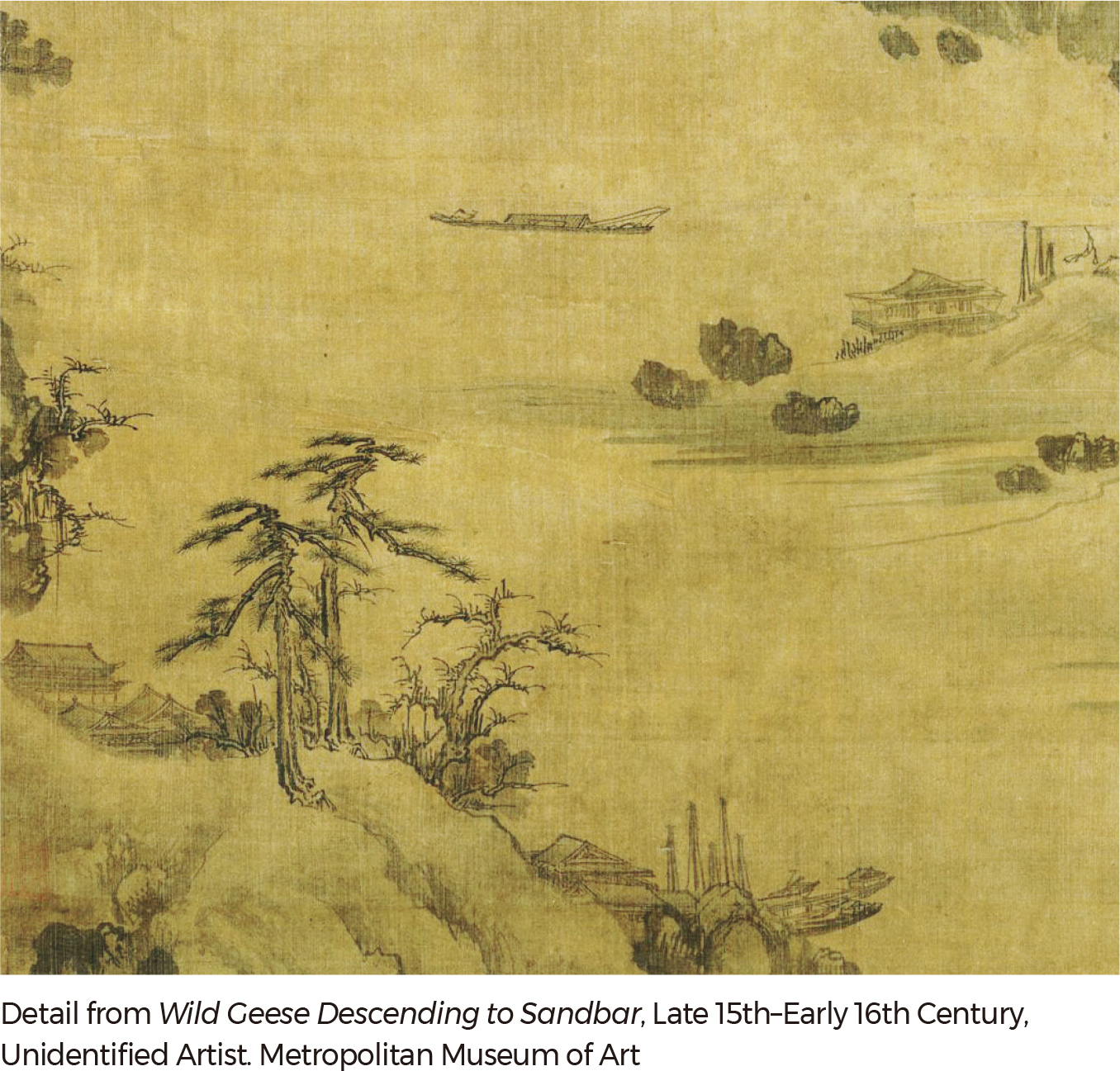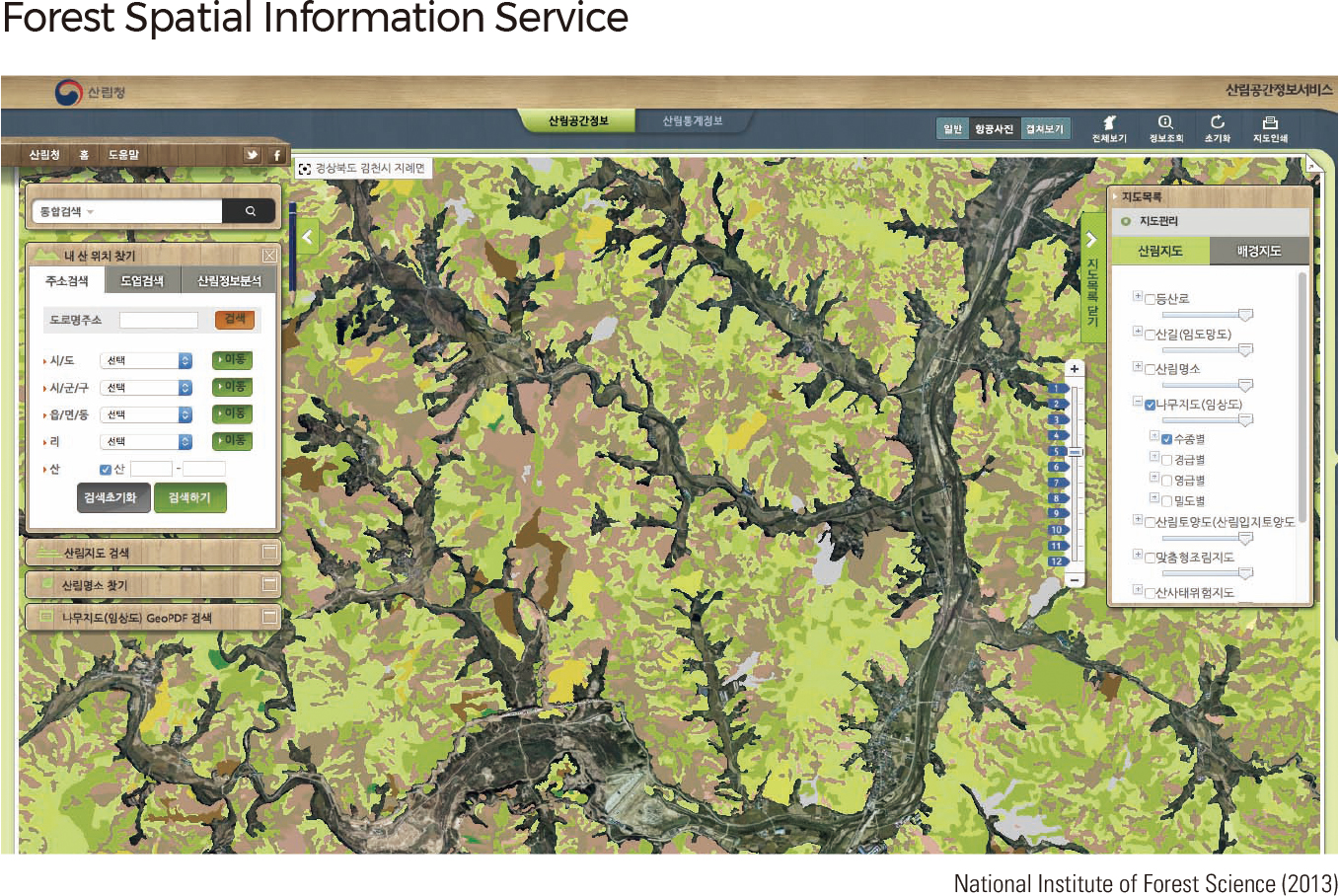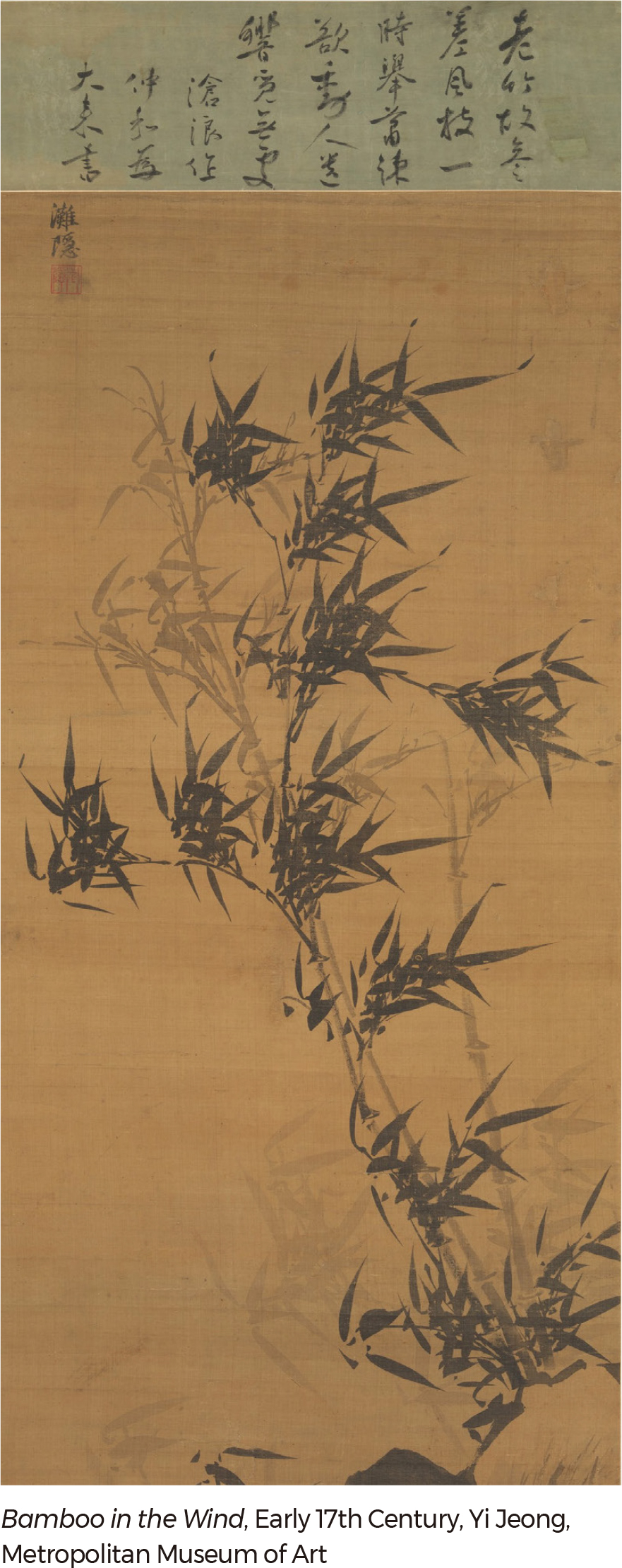Comprehensive Edition 2022
Korea’s forests exhibit a high biodiversity, with many different plant species living together in rich ecosystems. Moreover, many of these plants are found only in Korea. Such plants or animals, found only in a specific geographic area, are said to be endemic. There are many reasons for the high diversity and endemism of Korea’s forests. The large north-south extent of the peninsula and the variety of landscapes and soils mean there is a diverse set of habitats that allow many different species to thrive. Another reason is historical. During the ice ages, glaciers sent many species into the peninsula for refuge from the cold and ice. Thus, in Korea, older Tertiary plants were able to survive and to be joined later by species from the north.
Major forest types mapped here include coniferous forests composed mainly of evergreen trees with needles for leaves, such as pine and fir. Broadleaf forests are composed of deciduous trees that lose their leaves in winter. Examples include oaks, maples, and birches. Bamboo is an evergreen plant in the grass family. Bamboo grows very quickly and can become as tall as other trees. Korea is known for its success in combating land deforestation. Long years of slash-and-burn farming and firewood logging left many areas denuded of trees at the end of the 19th century. Without trees, there were many problems with erosion, loss of habitat for animals, and scarcity of trees as a resource for humans. To remedy the situation, afforestation (re-planting trees) and erosion control projects were initiated throughout the 20th century and continue today.
The protection of biological species includes recovering the ecosystem equilibrium and provides abundant and diverse benefits to humans. Around 13 million species are estimated to inhabit the earth, with 70 species becoming extinct every day. Also, an estimated 25% of all species are predicted to disappear by 2050. The current extinction rate is reported to be 1,000 times faster than the natural extinction rate.
An estimated 100,000 species inhabit South Korea. As of 2020, a total of 45,292 species, including 5,349 plant species, have been identified. According to the criteria of the IUCN Red List, 4,058 species have been designated on the Korean Red List. Currently, 12 species have been reported to be extinct, and 533 species are categorized as endangered. Of the 533 endangered species, 214 are plant species, accounting for 40% of the total. Digital mapping has become a critical tool for the management and protection of plant communities. These maps are compiled on a national scale, along with maps of other natural elements, such as topography, soil, and geology. Digital maps and their associated spatial data allow fast and accurate data search and effective support for various planning and decision-making processes. |





